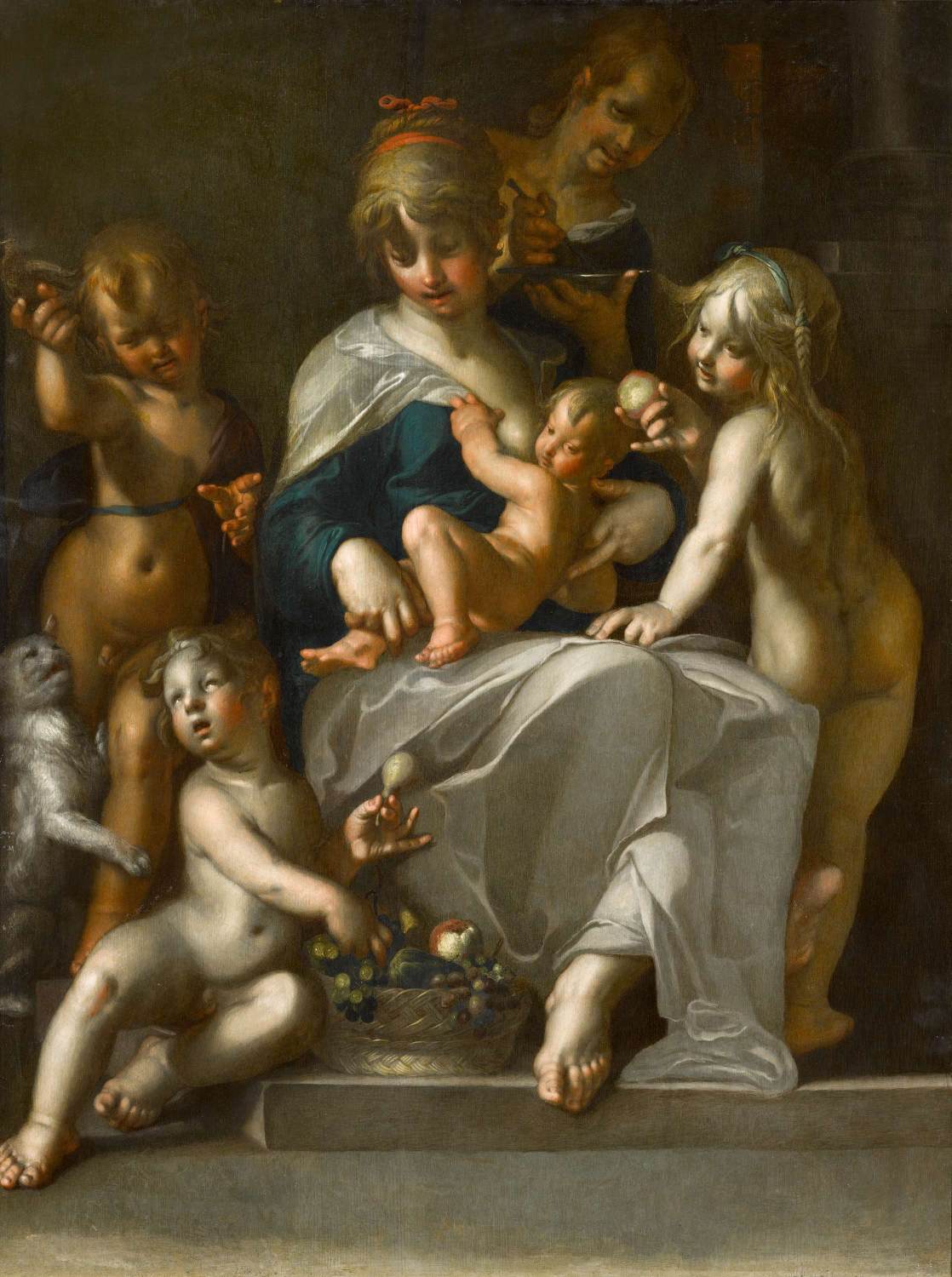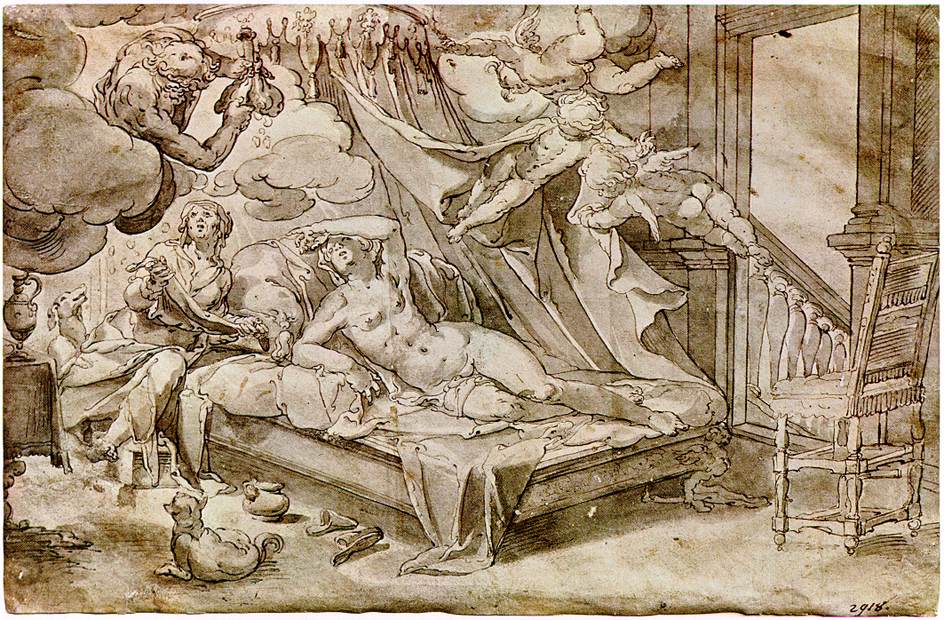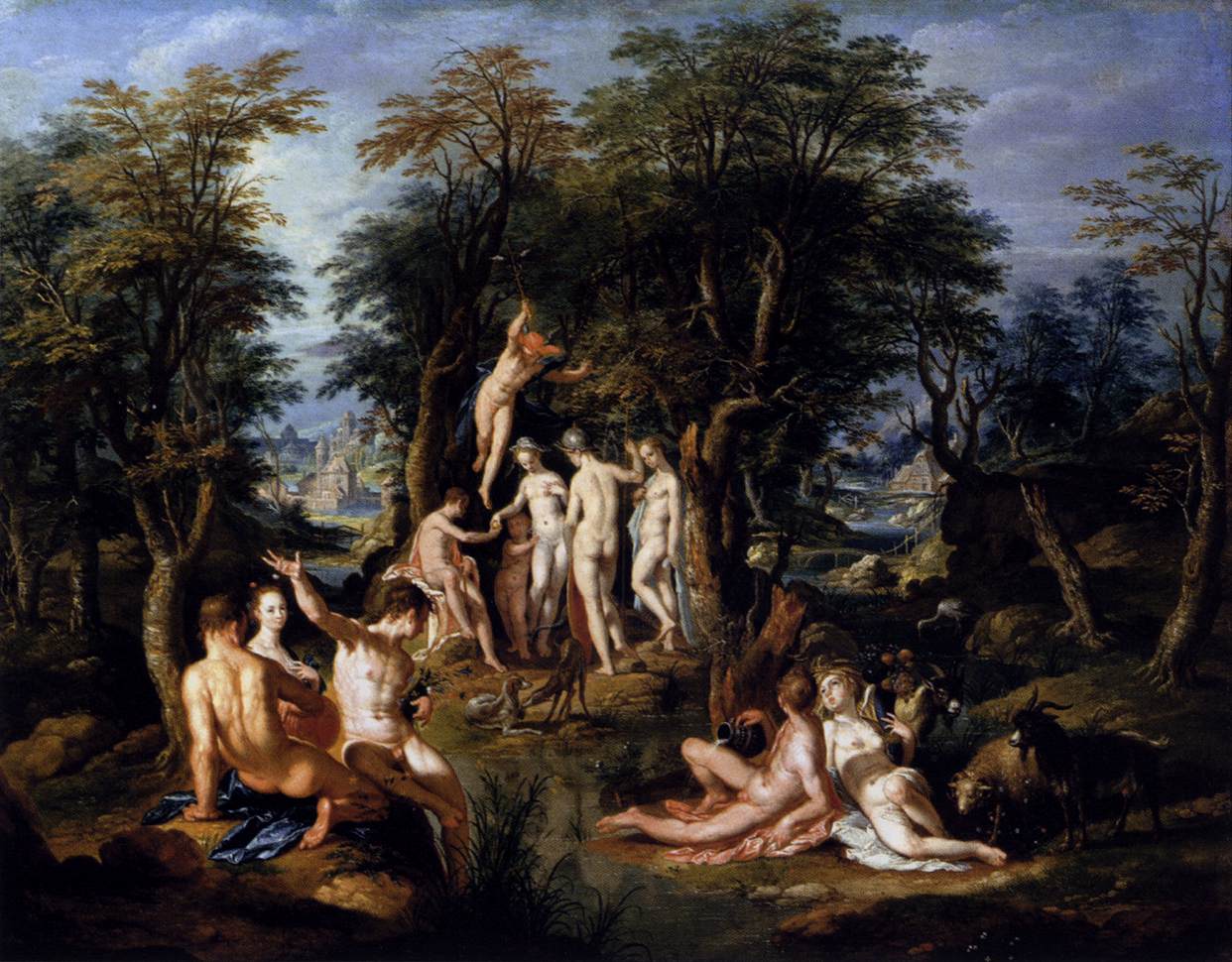Joachim Wtewael (or Uytewael), Dutch figure painter. After travelling in Italy and France c.1588-92, he settled in his native Utrecht, where he became one of the leading Dutch exponents of Mannerism. His highly distinctive, charmingly artificial style, which remained untouched by the naturalistic developments happening around him, was characterized by acidic colours and elegant figures in wilfully distorted poses. In his progress from northern Italy to Rome, Paris, and Fontainebleau, he gained a sophisticated understanding of an international style, which had been brought up-to-date in Utrecht by Abraham Bloemaert and by the example of the Haarlem Mannerists, in particular Hendrick Goltzius and Cornelis van Haarlem. The best collection of Wtewael's work, including a self-portrait (1601), is in the Centraal Museum, Utrecht.
Joachim Wtewael was the second son of a glass painter, Anthonis Jansz Wtewael, and Antonia van Schayck. He was named for his maternal grandfather, Joachim van Schayck (d. 1558), who was also a painter. Wtewael followed his father's profession until the age of eighteen but then went to study painting with Joos de Beer (active 1575-1591) for about two years. He then went to Italy, where he entered the service of Charles de Bourgneuf de Cucé, bishop of Saint-Malo. This arrangement lasted for two years, followed by two years in France. By 1592, he was established as a master painter in Utrecht. In 1594, he designed a stain-glass window for the Sint Janskerk in Gouda, with allegorical figures placed before a Corinthian archway. In 1595, he married Christina van Halen, the daughter of a shoemaker. The couple had two sons, the painters Peter and Jan (Johan), and two daughters, Antonietta and Eva.
Wtewael was a shrewd businessman, and he made much more money from his business ventures than by selling pictures. He was also involved with the formation of the Utrecht painters' guild in 1611, and with local politics.
//
![]()









